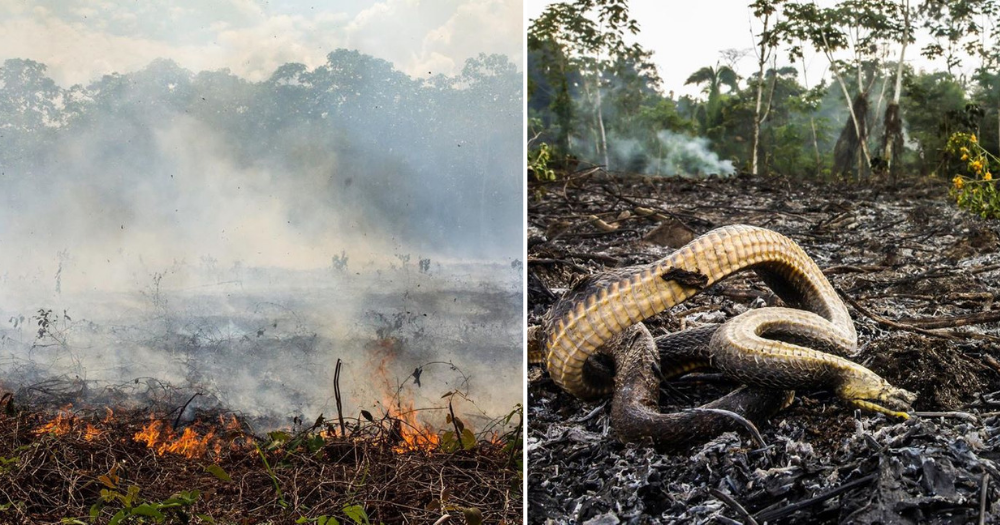The world's largest rainforest is up in flames, and Brazil is currently the epicentre of an environmental disaster.
The Amazon rainforest, covering seven million square kilometres of land and comprising 40 per cent of the world's rainforest, has been aflame for three weeks.
Images of the destruction have taken social media by storm, and sparked an outcry among netizens.
There seems however, to be a conspicuous lack of attention on the part of the Brazilian government.
Here's the breakdown of the environmental crisis happening on the other side of the world, and why it matters to everyone.
What is happening?
Thousands of wildfires have ravaged large portions of the Amazon Rainforest, especially in the states of Amazonas, Rondonia, Para and Mato Grosso.
Brazilian Ministry of Science, Technology and Innovation’s National Institute for Space Research (INPE) detected over 72,000 fires since the start of 2019, reported BBC.
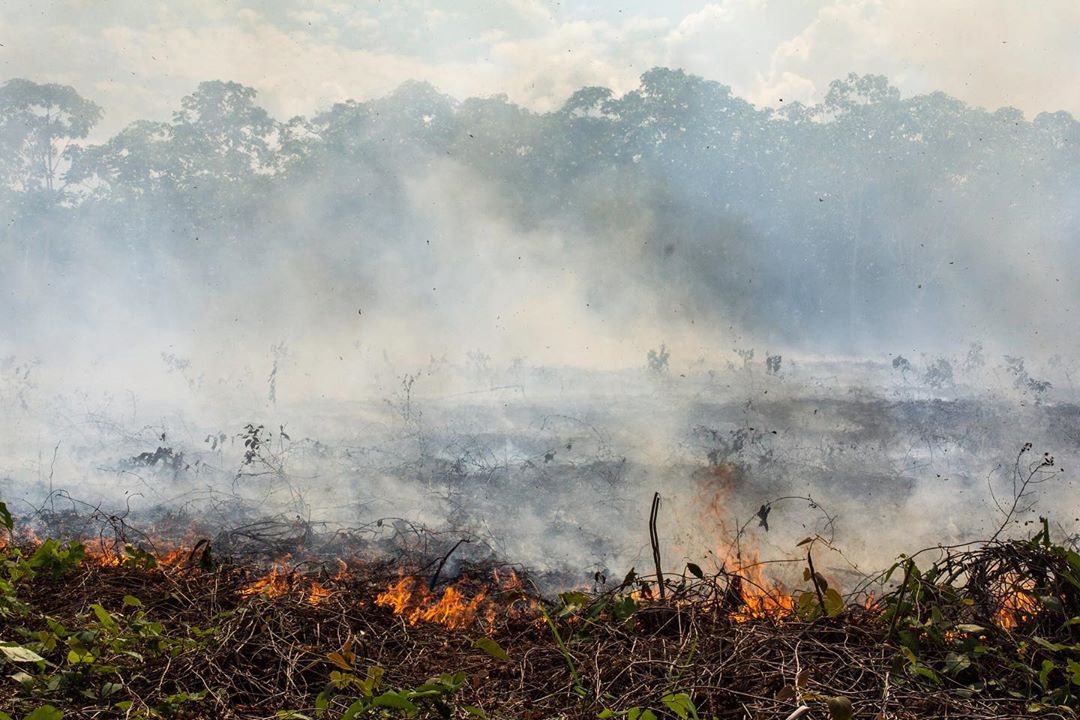 Photo from @gowrivaranashi / IG
Photo from @gowrivaranashi / IG
While wildfires are not an uncommon occurrence, especially during the dry season in July and August, there has a been a noticeable surge in wildfires in 2019.
The scale of the fires sparking in Amazon this year is unprecedented—there has been an 83 per cent increase in the number of fires compared to the same time period in 2018.
July has set a historic record for the greatest amount of Amazonian forests decimated in one month—the Amazon shrunk by 1,345 square kilometres. That's nearly twice the size of Singapore.
And in barely more than a week since August 15, 2019, there have been over 9,500 infernos destroying the rainforests.
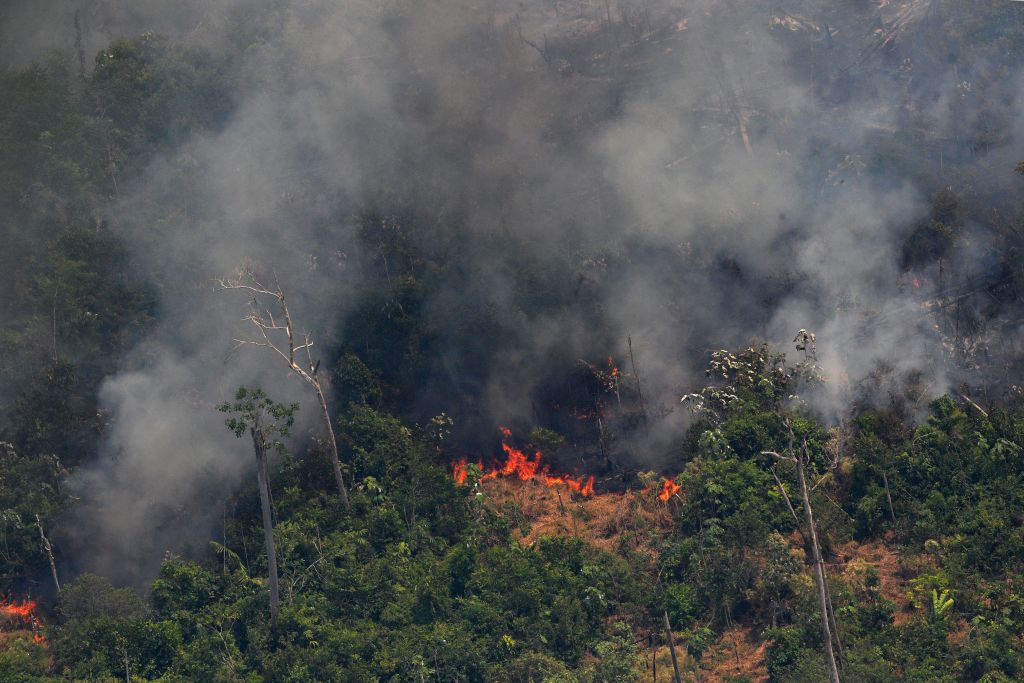 Photo by Carl de Souza / AFP / Getty Images
Photo by Carl de Souza / AFP / Getty Images
Here's a screenshot of a map from Global Forest Watch, which uses NASA satellite imagery to show fire alerts in near real time.
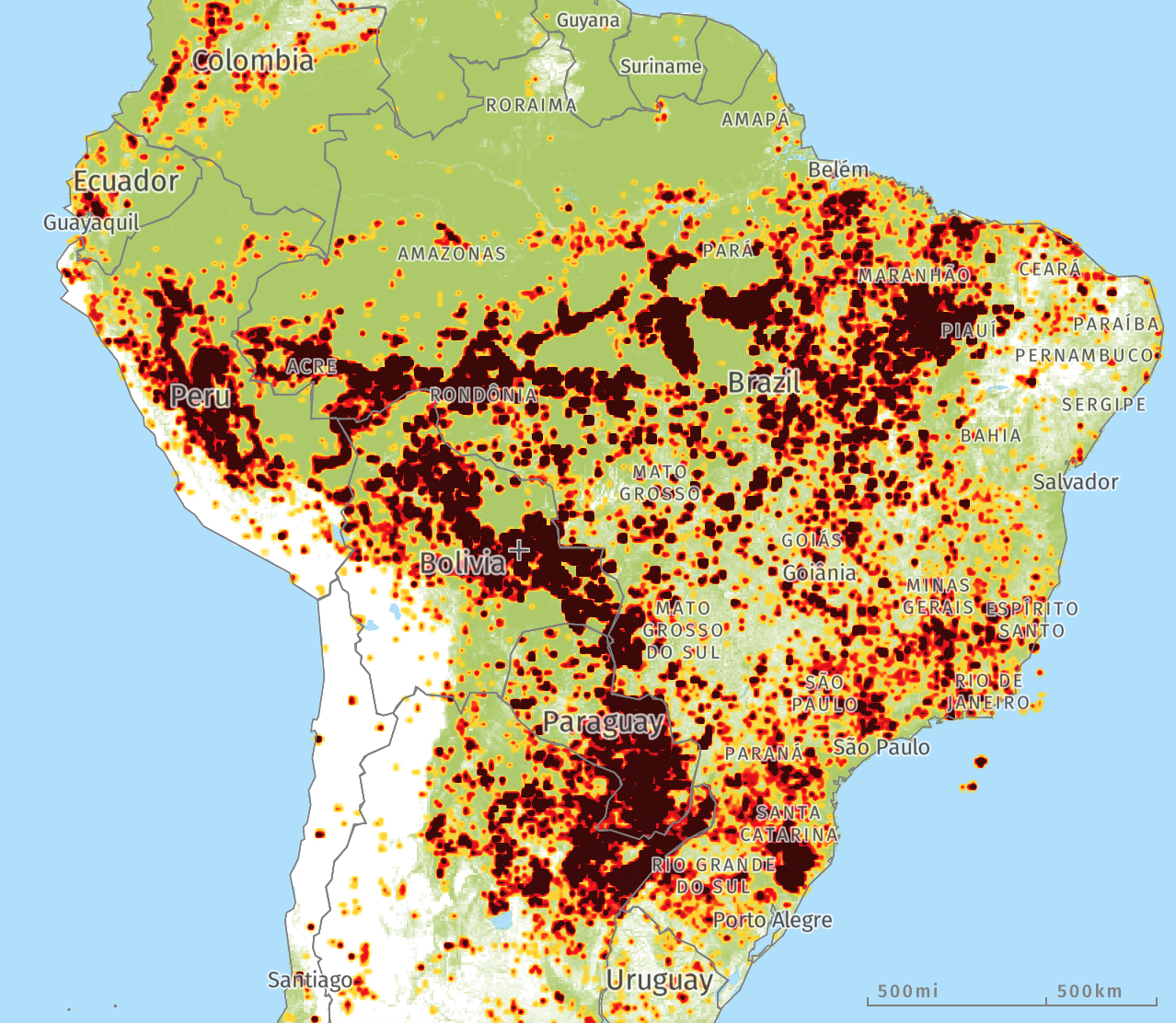 Screenshot from Global Forest Watch
Screenshot from Global Forest Watch
These fires are so huge and extensive, that NASA's satellites can spot the smoke from space. The smoke are the wisps of grey in the image below, while the small puffs of white are clouds.
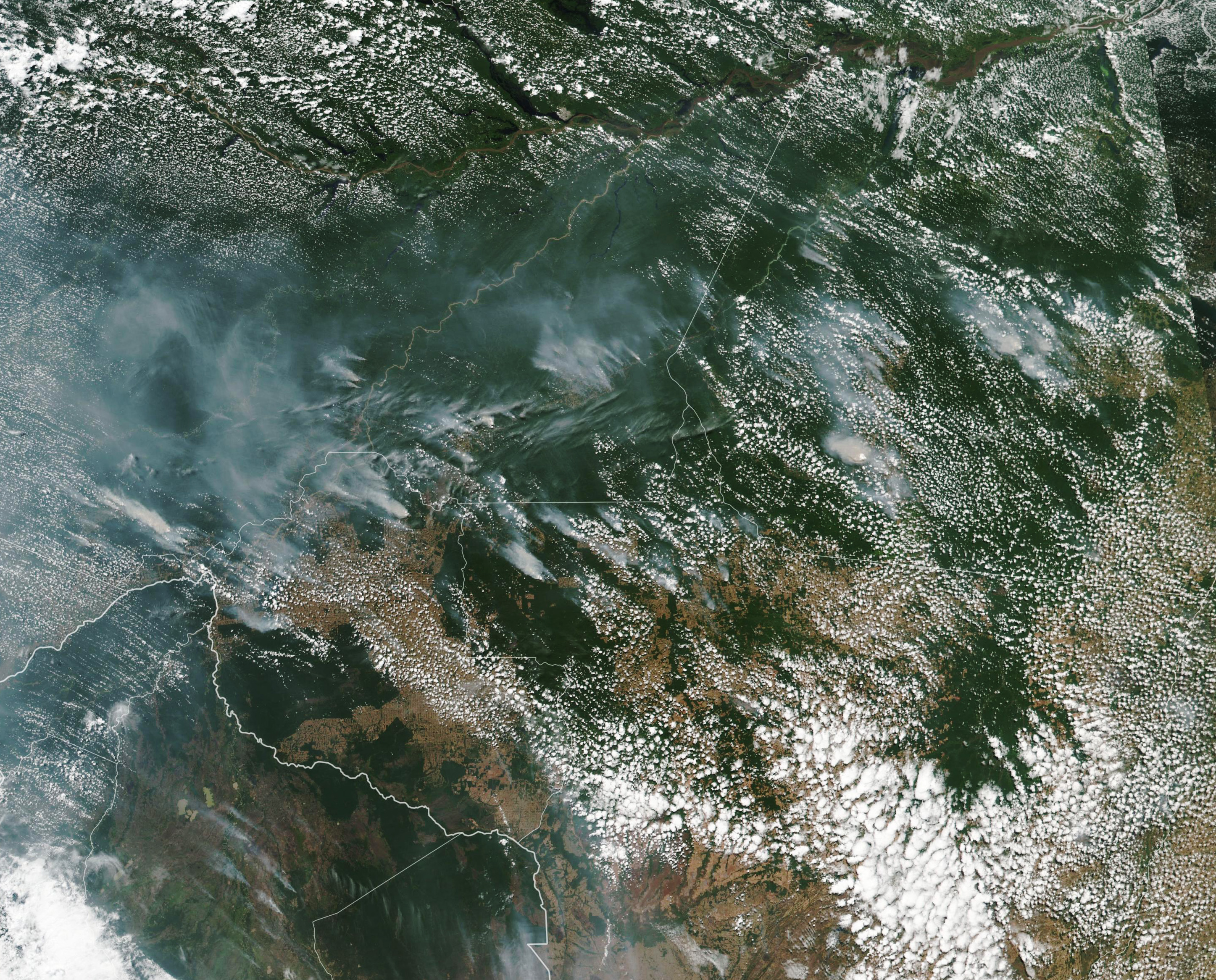 Photo from NASA's Earth Observatory
Photo from NASA's Earth Observatory
Smoke so thick cities were blanketed
The fires in the Amazon are so intense, that Brazil's biggest city 2,700 kilometres away, Sao Paulo, has been shrouded in complete darkness in the middle of the afternoon.
The city's skies were blanketed by thick smog, which has drawn comparisons by netizens to "doomsday", "apocalypse" and "Mordor".
The dense smoke was also the result of other factors—dense rain clouds and a cold front, which exacerbated and transported the smoke to the Brazilian city.
This doomsday photo was taken in Sao Paolo y'day showing the BURNING of the Amazon Rainforest by cattle ranchers protected by Bolsonaro's Gvt. I can't understand how this can happen in Brazil in this century (or any country). Our earth can't take this. Humanity can't take this. pic.twitter.com/YGqc5oI76d
— Jo Corlett (@JACRic1) August 20, 2019
Amazon is burning for more than 10 days now and the smoke can be seen from space. This is apocalyptic Sao Paolo sky in afternoon →
— Ganesh (@ganeshkulkarni) August 21, 2019
pic.twitter.com/TwfOiqwvDx
Why is the Amazon burning?
What has caused the blazes in the Amazon rainforest, you may be wondering?
The blame has been solely placed on human activity. According to The Express, the rainforest has generally been fire-resistant due to its natural moisture and humidity.
However, its resilience has decreased as deforestation and logging activities intensified over the years. Said ecologist Thomas Lovejoy to National Geographic: "There’s no question that it’s a consequence of the recent uptick in deforestation."
Fires are often started by local farmers and cattle ranchers as an easy way to clear land, and these blazes then spiral out of control.
As a result of the decreased tree cover and greenery, rainfall lessens and the region becomes even drier, spurring more deforestation and potential wildfires. It's a cycle of destruction.
The Amazon rainforest has previously existed as a perfectly balanced, self-sustaining system, self-generating the rain that falls over the land. Human activity however, seems to be pushing the ecosystem past its tipping point.
President Bolsonaro and his campaign against the environment
While the fires in the Amazon are sparked by small-time farmers, the main driver of deforestation can be said to be none other than Brazil's newly elected president, Jair Bolsonaro.
Far-right, ex-military captain Bolsonaro took office in January 2019, which was when the uptick in forest fires began.
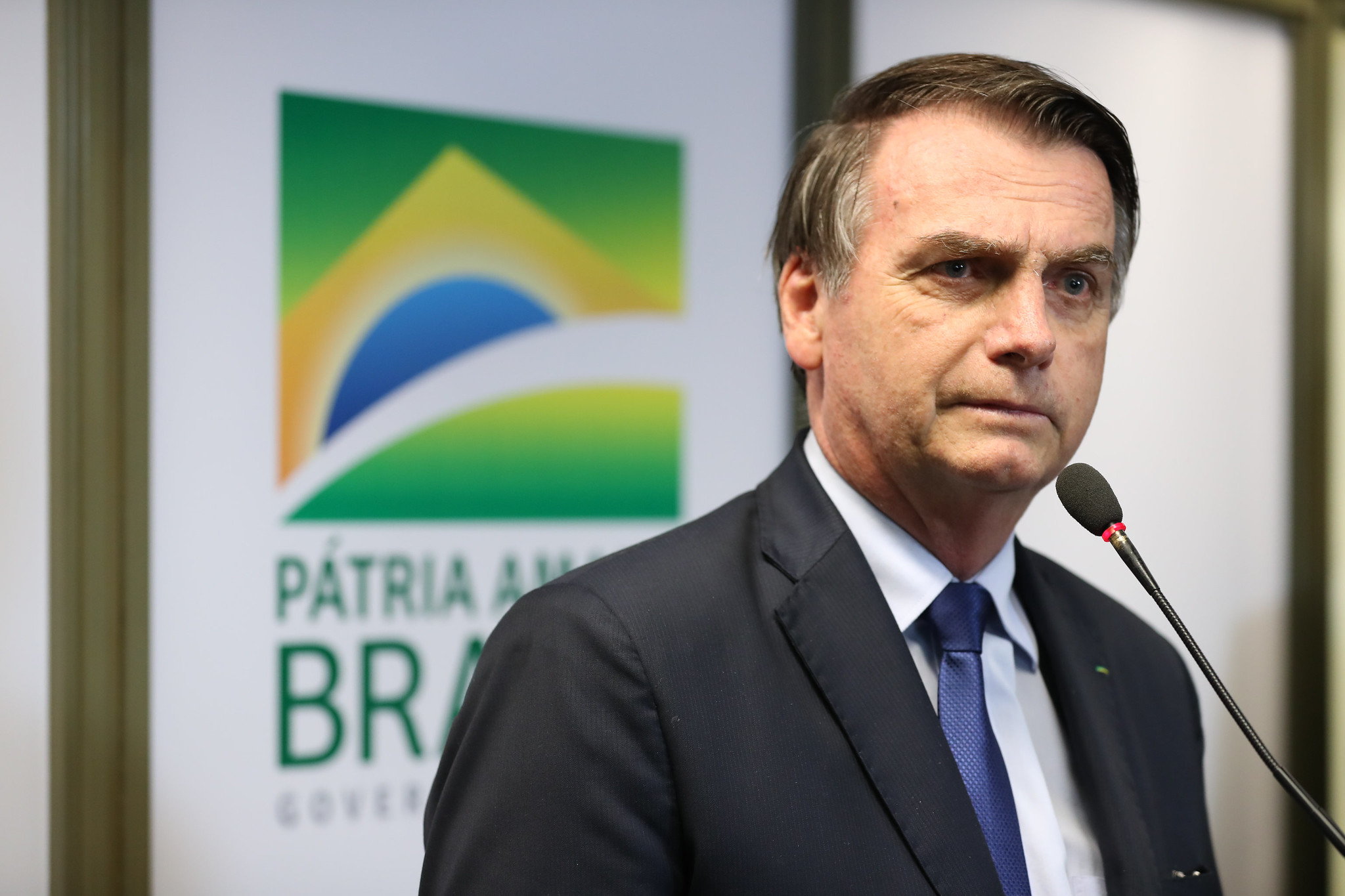 Photo from Palácio do Planalto / Flickr
Photo from Palácio do Planalto / Flickr
During his election, Bolsonaro already broadcasted his plans to open up the Amazon to logging by agribusinesses, and was eventually elected with much support from said businesses and strong opposition from environmentalists.
The president, who some have dubbed the "Trump of the Tropics" or "Tropical Trump", has promised to abolish Brazil’s environmental agency IBAMA, a promise which he seems to be making good on.
And when it comes to the blazes, it seems the president is pointing fingers at everyone except himself—he has blamed non-governmental organisations (NGOs) for the wildfires, despite admitting there was absolutely no evidence, and has even warned other countries to stop "interfering with [Brazil's] sovereignty".
Amidst mounting international criticism, Bolsonaro attributed the infernos to it being the season of queimada, the season where farmers are clearing land, before stating that Brazil did not have the resources to handle the wildfires, reported Reuters.
"The Amazon is bigger than Europe, how will you fight criminal fires in such an area? We do not have the resources for that."
Why should we care?
French president Emmanuel Macron has even labeled the burning as an "international crisis". But if Brazil itself—home to 60 per cent of the Amazon rainforest—doesn't care, why should the rest of the world?
Here's exactly why.
Stores carbon and produces oxygen
The Amazon is the largest tropical rainforest in the world and is practically 'life support' for the earth—it has been referred to as the earth's "lungs".
Besides producing six per cent of the planet's oxygen, it is also the biggest carbon sink on earth. The carbon emissions the Amazon takes in is equivalent to the emissions generated by the nine Amazon nations, reported Phys.org.
Not just that, but the Amazon has been absorbing 430 million tonnes of carbon emissions per year, which is four times the emissions produced by the UK in 2016.
Not only will burning or cutting the forests release the carbon stored back into the atmosphere, but humanity will have lost a precious resource in the fight against climate change.
Trove of biodiversity
The forest is also home to one in 10 of all known species on earth, making it a treasure trove of biodiversity.
According to the World Wide Fund for Nature (WWF), 40,000 plant species, 3,000 freshwater fish species and over 370 species of reptiles can be found in the Amazon, and this isn't counting the species that have yet to be discovered.
Since 1999, more than 2,000 new species of plants and vertebrates were described.
Additionally, more than 25 per cent of the drugs used in modern medicine is derived from plants in the Amazon.
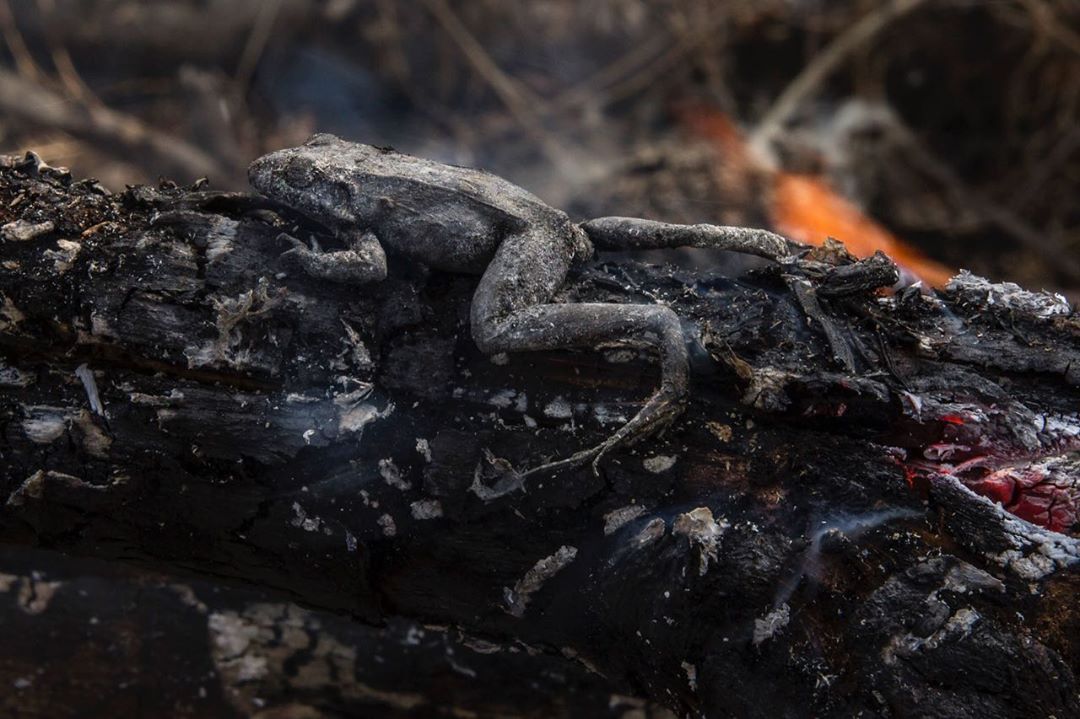 Photo from @gowrivaranashi / IG
Photo from @gowrivaranashi / IG
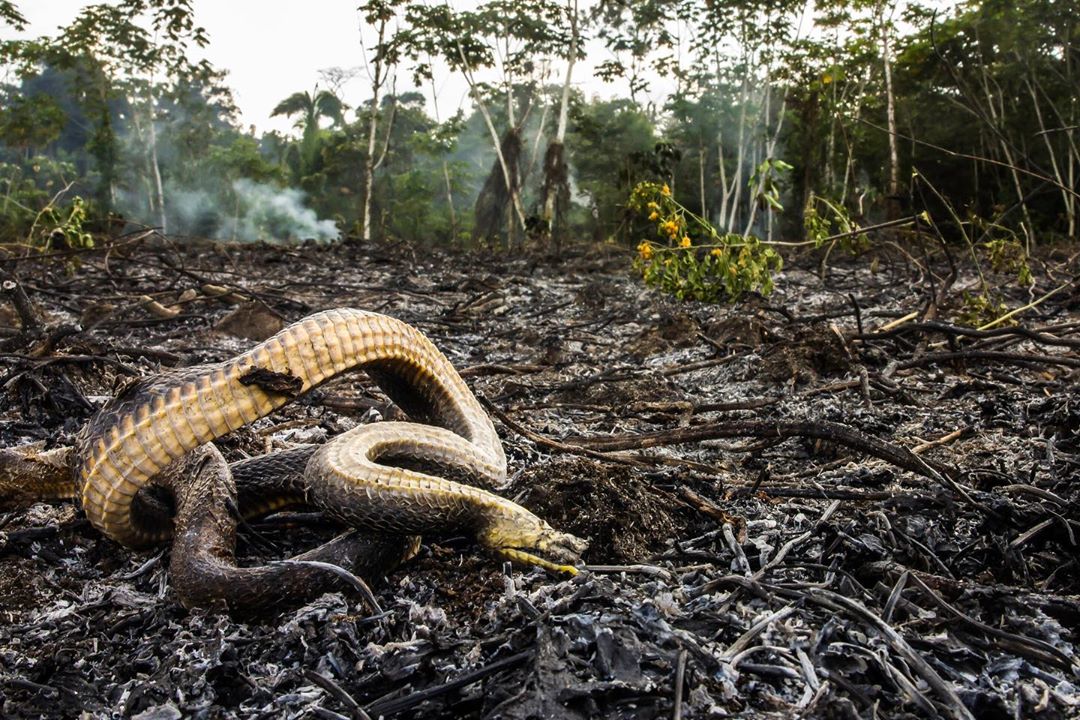 Photo from @gowrivaranashi / IG
Photo from @gowrivaranashi / IG
Call-to-arms on social media
The environmental destruction wreaked on one of earth's most precious natural resources may have flown beneath the radar initially due to lack of media coverage.
But now many, including celebrities such as Leonardo DiCaprio and Cristiano Ronaldo, have taken to social media to share photos of the fires with the trending hashtag #PrayforAmazonia.
https://www.instagram.com/p/B1b_JNIF1kg/
where 👏 are 👏 the 👏 major 👏 news 👏 outlets 👏#AmazonRainforest pic.twitter.com/77Jihx8uqP
— CTRL bee 🗡️ (@beehaviour_) August 21, 2019
Please pry for Amazon 🙏🙏#PrayforAmazonia pic.twitter.com/0u98coXMSB
— Jetol (@Jetol5) August 23, 2019
Several news sites such as CNN however, have since revealed that many of the viral photos circulating online (including all the images above) are actually inaccurate. The photos of burned animals and raging forest fires are either old photos of previous fires in the Amazon, or are not of the Amazon in the first place.
Nevertheless, this doesn't detract from the current crisis at hand—the fires burning in Amazon are very real, and so is the suffering of native wildlife and indigenous tribes.
How you can help
Thus far, it seems the Amazon fires are still burning, despite some seemingly illegitimate news circulating of rain extinguishing the blazes.
And while several politicians have made promises to help, Bolivia's president contracted a Boeing 747 to help put out the fires, Bolsonaro's bull-headedness could prove an obstacle.
Protests have also sprung up in Dublin, Ireland outside the Brazil Embassy in a bid to trigger some action and raise awareness. Demonstrations have also reportedly begun in London, Madrid and Copenhagen, Denmark, reported Cnet.
But for those far away from the epicentre, here are some small, but meaningful actions you can take to hopefully protect what's left of the Amazon rainforest:
-
- Donate to these legitimate non-profits which are working to help conserve the Amazon—Rainforest Trust, Amazon Watch, Amazon Conservation Association, Rainforest Action Network. Donations go to reforestation and conservation projects.
- Sign this petition a lawyer in Brazil started, aiming to mobilise an investigation into the fires. It has accumulated over three million signatures out of the four million target.
- Take steps to reduce your carbon emissions.
- Reduce your paper consumption.
- Educate yourself and others. Spread the news on the Amazon forest fires, tell your friends, share the posts online.
Editor’s note on August 25, 11pm: This article has been updated for accuracy.
Top photo from @gowrivaranashi / IG
If you like what you read, follow us on Facebook, Instagram, Twitter and Telegram to get the latest updates.
